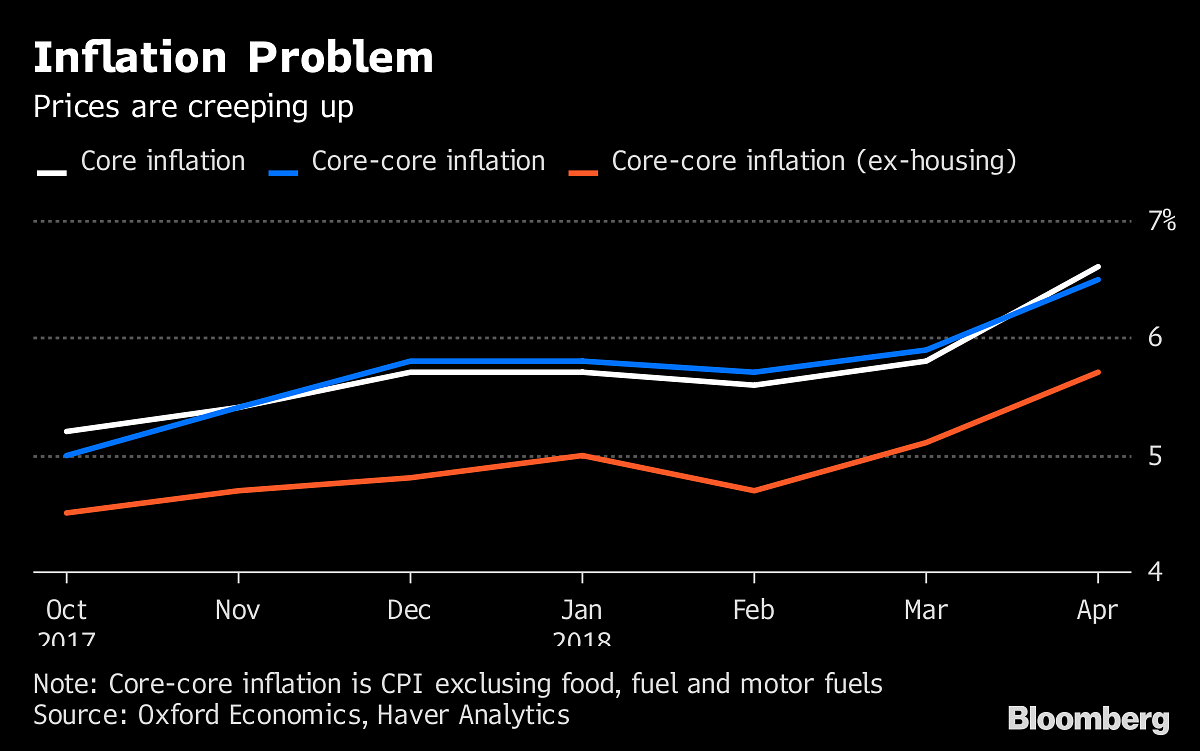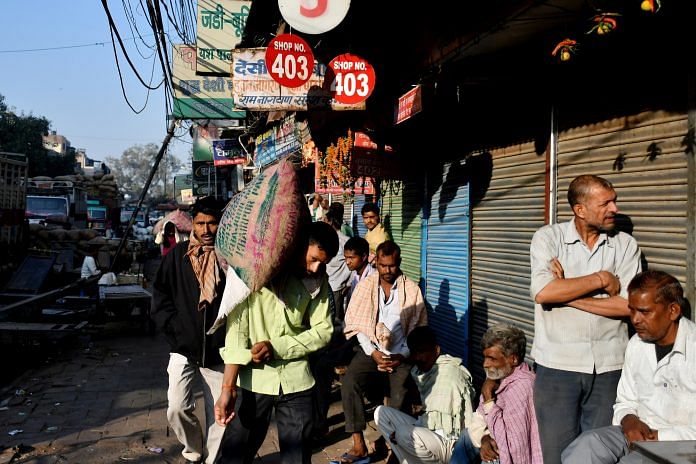For oil-importing India, the combination of a weaker currency and surging oil prices is a threat not only for the current-account deficit, but also inflation.
India’s growth recovery strengthened last quarter but doubts remain over whether it can sustain that pace amid surging oil prices and a rout in emerging markets.
Gross domestic product in the fourth quarter of the fiscal year that ended in March 2018 rose 7.7 percent, compared with a median estimate of 7.4 per cent in a Bloomberg survey of 38 economists. While that makes it one of the fastest-expanding major economies, risks are rising because of a currency slump and faster inflation.
To add to that, India’s nearly $1.7 trillion formal banking sector is coping with $210 billion of soured or problem loans and fraud scandals have erupted at some regional banks. That’s set to curb lending and limit growth even more, and makes the central bank’s job even more complicated ahead of next week’s policy meeting.
“A sustained rise in oil prices to $100 a barrel could even lead to a re-emergence of some of the external and currency risks that existed pre-2014,” said Priyanka Kishore, head of India and South East Asia economics at Oxford Economics Ltd. “The banking sector remains in a fragile state, and such problems have the potential to derail the ongoing growth recovery.”
The economy expanded at 6.7 percent in the fiscal year through March, the slowest pace since Prime Minister Narendra Modi took power in 2014. Goldman Sachs Group Inc. cut its growth projection for the year ending March 2019 to 7.6 percent from 8 percent, amid concerns that the banking system’s woes are more widespread.
On Wednesday, Moody’s Investors Service cut India’s 2018 GDP growth outlook to 7.3 percent from 7.5 percent, citing higher oil prices and tighter financial conditions.
Rupee Slump
New risks have emerged just as the economic disruption caused by a cash ban late in 2016 and the chaotic roll-out of a national sales tax fade. India has been swept up in the maelstrom that’s hit emerging markets as rising U.S. interest rates and a stronger dollar prompt investors to pull money out of stocks and bonds. The rupee has been the hardest hit in Asia, dropping more than 5 percent against the dollar this year.
For oil-importing India, the combination of a weaker currency and surging oil prices is a threat not only for the current-account deficit, but also inflation. Consumer-price growth is already picking up — reaching 4.6 percent in April — and for a central bank that aims to keep inflation around the 4 percent midpoint of its target band, an interest-rate hike can’t be far away.
Viral Acharya, the deputy governor in charge of monetary policy, said last month he’ll vote for a withdrawal in monetary accommodation in June.

What Our Economists Say …
Soaring crude prices are likely to exert pressure on the government to cut excise duties on oil, which will reduce public expenditure. Higher input costs will either directly lower the gross value add by firms or will lower demand if passed on to consumers. Higher cost of financing is also likely to slow investment and consumption spending across government, households and firms. –Abhishek Gupta, Bloomberg Economics
There’s also limited room for a fiscal boost to support growth. India’s budget gap is one of the widest in Asia, and Modi has to walk a fine line to keep the deficit in check while trying to woo voters ahead of next year’s election.
Nevertheless, green shoots are emerging in Asia’s third-largest economy. The industrial sector is expected to pick up while services, which contributes over 50 percent to gross domestic product, is set to remain robust. Even farming, which has been a laggard, is recovering.
“Agricultural activity is likely to be supported by record food grain output, surge in sugarcane production after two years of decline and a sustained increase in pulses output,” said Teresa John, an economist at Nirmal Bang Equities Pvt. Ltd. in Mumbai. –Bloomberg



